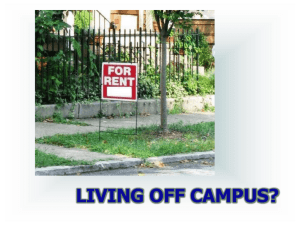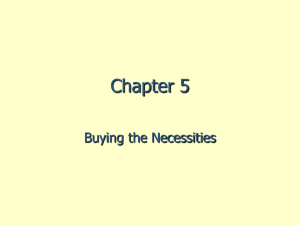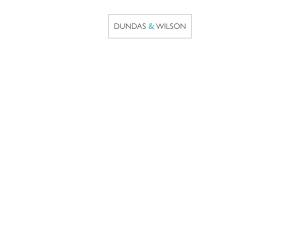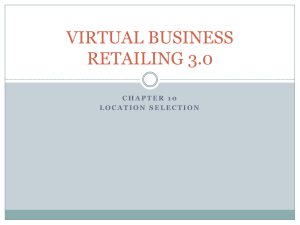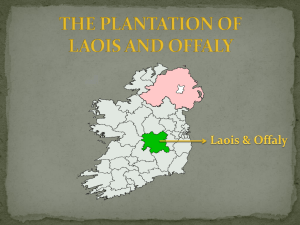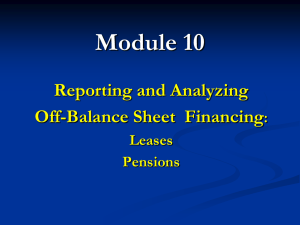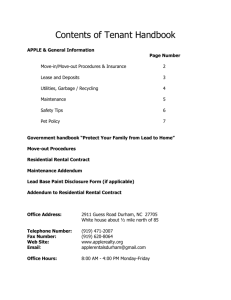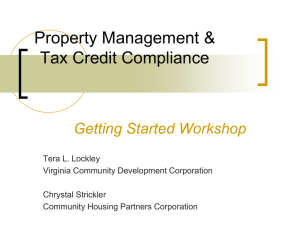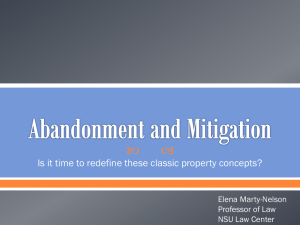Basics-of-leases
advertisement
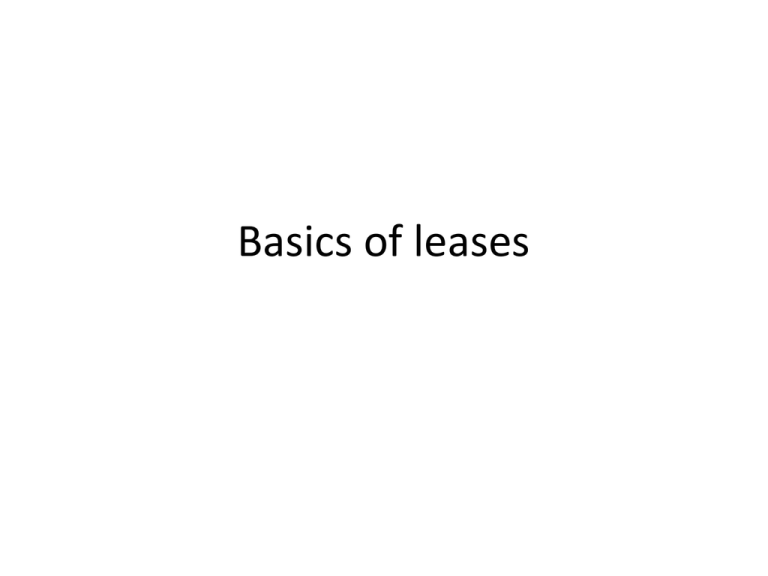
Basics of leases Introduction to Leases • A lease is a legal contract between a tenant (lessee) and landlord (lessor) • Specifies the rights and obligations of the owner and user • A lease divides the “bundle of rights” in real estate into two interests – Owner’s Leased Fee Interest – Tenant’s Leasehold Estate Subleases • A tenant typically has the right to sublease space – unless noted otherwise. Often the landlord will have some right to refuse sublease tenants but must be reasonable in accommodating requests. • Subleases do not eliminate the tenants (lessee) requirement to guarantee the rent is paid, unless the landlord releases the tenant and then it is no longer a sublease. Page 2.3-2.4 Requirements of a Valid Commercial Lease • Names of owners & tenants with authority to contract • Description of property • Consideration (deposit or something of value) • Legality of leased space (building and zoning code compliance, etc.) • Offer and acceptance of the contract Page 2.4 Building Measurements Term Measure Definition and Use Gross Building Area Gross Square Feet (gsf) or GBA Includes all enclosed area Total Rentable Area Rentable Building Area or RBA Gross less vertical penetrations (i.e. stairs, elevator shafts) Common Area aka Area shared by all “Core Space” at CoStar tenants Common areas of the floor like hallways, bathrooms. Building Common Area % (CoStar “Core Factor”) Aka “Load factor” or “Loss Factor” Floor and Building Common area relative to Rentable Area Common area use of the building (does not include vertical penetrations) Efficiency Ratio Ratio of RBA to GBA More efficiency means more rent per GBA but less architectural interest and less common space. Rentable, Usable and Common Space Not Rentable Usable Common B Elevators Lobby Hall Bath Bath Storage Stairwell Hall C “Core” or Load Factor Rentable Usable Load factor • Calculate the load factor: A Landlord quotes 22,000 SF of Rentable space with 20,000 SF of Usable. Calculate the the “load-factor.” 22,000 = 1.10 or 10% “load” 20,000 Efficiency Ratio or inverse of Load factor Usable ER Rentable 20,000 = 90.91% 22,000 Expense Terminology in Leases Types of Leases • Gross Lease – Landlord pays all real estate operating expenses to maintain and operate the property including property taxes, insurance, cleaning, painting, landscaping, repairs and sometimes utilities aka “Full Service Lease” • Triple Net Lease – Tenant pays all of the operating expenses. • Net lease – need to see lease to define what is passed through and what is paid by the landlord. Page 2.17 Commercial Leases • Commercial leases can be gross “full service” leases or triple net leases. • Most multi-tenant buildings use some sort of net lease, but single tenant buildings are more likely to be triple net. Most Common Gross Lease “Net Lease” where we pay see some pass through items (i.e. property taxes and insurance) Triple or Absolute Net Lease Expense Terminology in Leases • Expense STOP: The point where the landlord stops paying operating expenses, i.e. up to some dollar amount per sq ft. • Expense Pass- Through : Operating Expenses that passed to the tenant, sometimes with an admin charge tacked on, esp common in retail shopping centers. • Common Area Maintenance: “CAM” • Tenant Improvements: “TI s” • Concession’s: Ex: TI’s, free rent, free parking spaces. Key Rent Terms • Fixed Rental: fixed for period of lease • Step Leases: Often stepped up with pre-negotiated % increases at set intervals • Indexed Leases: Often indexed to the CPI • Percentage Rent: Also known as “overage rent” based on sales above a defined break point. • Lease Renewal Options: Includes new time periods and basis for new rent determination. • Expansion options, termination and relocations Options • Effective rent: see next slide Effective Rent Calculation for the landlord CF2 CF3 CFt LPV =CF1 + ------ + -------- + .....+ --------1+k (1+k)2 (1+k)t-1 CF is the net cash flow received after all periodic operating expenses CF1 is the net cash flow to the landlord at the beginning of the lease in month 1 While CFt is the net cash flow in the last month of the lease at time t. From the tenant perspective the cash flow is not the net received but the total paid. K is the discount rate used to bring the cash flows back to present value. Last we convert this present value to a level annuity like a flat payment as follows: k(LPV) Effective Rent per period = -----------------------(1+k)[1 - 1/(1+k)T] This could be monthly or annual. Confusing? Try a visual example…… Rent Pattern is converted to an equivalent flat payment for the entire lease period. Period 1 2 3 4 5 TI = $25 PSFT No rent Free rent Rent $40 PSF Rent $50 PSF Rent $60 PSF $40 $50 $60 -$25 Effective Rent Annual Calculation using 10% discount rate = $20.77 Could you guess at $20.77 from the above pattern or compare to another lease with a different pattern? That is why we need the calculation, so we can compare Leases. Note: discount rates need not be the same for landlords and tenants. Thank You! • Reference texts: Real Estate Principles for the New Economy by Miller and Geltner (Southwestern/Cengage) or Commercial Real Estate Investment and Analysis by Geltner and Miller (Cengage)

